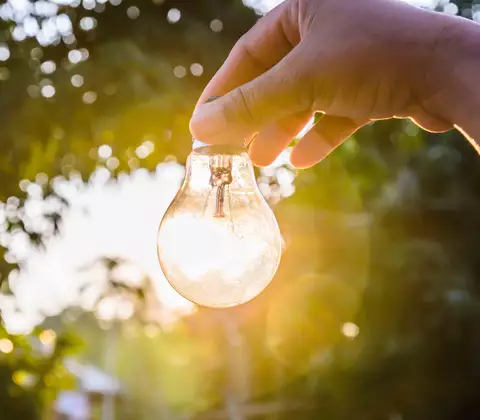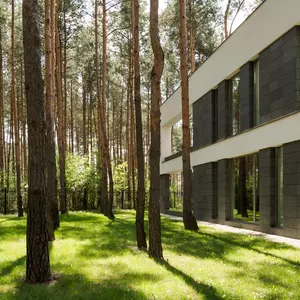
Getting to grips with your energy bills
In our modern society, the cost of energy is one of the most significant factors in our everyday lives. It affects every person who doesn’t live off the grid in a hut in the woods. Not without reason are annual utility bills referred to as the “second rent” because the cost of electricity, oil, gas or other fuels consume a good portion of the budget in an average German household. But there are several things you can do to reduce your energy bills.
How can you reduce your energy bills?
Firstly, take a look at your overall power consumption as there is almost always potential for making savings here. You can use intelligent strategies to easily reduce your heating costs.
Keep your heating temperatures down. Ventilate the rooms correctly (air rooms fully and briefly at regular intervals instead of leaving windows cracked open). Prevent thermal bridges from forming due to inadequate thermal insulation. If possible, use electronic aids and good thermostats to help control your costs better.
However, it is electricity prices in particular that empty the pockets of most households. Even though prices have been rising more slowly or remained more or less the same since 2014, the cost has undeniably risen very steeply when compared to 2000.
There are many ways to reduce electricity consumption and, consequently, your power bills. When it comes to lighting, legislators have already stipulated the use of more economical lightbulbs for many years.
Conventional incandescent lightbulbs that convert a large proportion of the power they consume into heat have now disappeared almost entirely from the market. Halogen lamps are slightly more efficient but are also being gradually scrapped. But energy-saving fluorescent lightbulbs were a poor alternative for many consumers are they were expensive to buy, did not last a particularly long time and were difficult to dispose of due to the mercury they contained.
In contrast, LED lightbulbs are an almost perfect solution and are now available in many different low-price variants. They enable us to lower our electricity consumption and, therefore, our power bills considerably as they use only a fraction of the kilowatt hours needed by a conventional lightbulbs yet produce the same light output.
Many models can also change their colour and brightness, which can be put to great effect to create original lighting schemes, particularly in smart home systems.
Scrap your old electrical appliances to reduce your energy bills
Large appliances account for the greater part of our electricity consumption, but it would be difficult to do without them. We need a fridge as much as we need a washing machine. Their long service lives of 10 years and more unfortunately means they also push up our bills. This is because technology that was considered to be economical a decade ago has poor energy efficiency at best today if we compare the kilowatt hours consumed.
But if we compare the electricity consumption of an old fridge with the savings made by a new appliance, you could recoup your investment within only a few years and so lower your electricity bills in the long run. Do not set your fridge to too low a temperature. A setting of +7°C (-18°C in the freezer compartment) is sufficient for most foodstuffs.
The amount of power used by electrical and electronic appliances is stated on the energy efficiency label. It is inadvisable to use appliances that do not achieve at least class A. Tumble driers, for instance, are often singled out for criticism, which is why you should dry your laundry as efficiently as possible.
Use the washing machine’s fastest spin setting for every wash cycle. Economising at this point would be counterproductive because the drier the laundry is when you put it in the tumble drier, the less power it has to use. Other electrical appliances must be considered just as critically: cookers, ovens, TVs and computers can all be upgraded or used more efficiently.
Do not leave smartphone and tablet chargers permanently attached to the power socket. In fact, a surprising number of appliances use electricity even when they are not actually switched on. Power sockets with on/off switches can prevent this but are not suitable for all appliances (e.g. printers that start a complete cleaning cycle every time they are reconnected to the power supply).
Lower energy costs by changing provider
As some point you will have exhausted the maximum potential for saving energy and optimised your power consumption. However, your electricity bill can still grow. It is then high time to look for a cheaper electricity supplier. Online switching portals let you compare electricity prices quickly and clearly.
It is important to pay attention to regional differences. An energy supplier that is the cheapest in Berlin can be the most expensive in Munich and vice versa.
Many households overspend by hundreds of euros every year because they have never changed their electricity rate. But this almost always means that the consumers will be paying the general tariffs of the local power supplier.
These are the most expensive tariffs. But there is goods news: you can switch to a cheaper tariff or change to an entirely new electricity supplier at any time. However, the individual notice period can depend on the terms of your contract.
Always choose a tariff with a short contractual period. If you commit yourself to one supplier for one or even two years, you cannot respond to favourable price developments despite your supplier’s price guarantee. The exception: if the electricity supplier raises the price per kilowatt hour (which can still happen if you have a price guarantee, as these usually do not include taxes and fees), you can and immediately should avail yourself of an exceptional right of termination. The same applies to gas suppliers.
But don’t worry! There is no risk of you suddenly being left in the cold and dark if problems occur when switching suppliers. If necessary, you are always covered by the statutory basic supply guarantee.
Compare energy prices regularly and change your supplier often. New customers are almost always given the best conditions. But stay away from advance-payment tariffs as any money could be lost if the supplier goes bust.
Structural measures can reduce energy costs in the long run
The best way for home owners to reduce their energy costs is to fit good thermal insulation. Upgrading the heating can also actively lower consumption.
Installing modern technology (e.g. heat pumps or solar thermal technology) and converting to alternative fuels (e.g. pellets) means you worry less about energy prices. After all, if you produce your own electricity, you no longer have to pay an arm and a leg to buy it in.
WOLF Service Hotline experts would be glad to answer any questions on saving energy.

An overview of the most important tips
Compare energy prices regularly and switch suppliers
Convert to modern heating technology and perhaps even alternative fuels
Optimise the insulation of your building
Lower your electricity consumption by converting to energy-efficient electrical appliances
Use existing appliances responsibly
If possible, switch to alternative energy generation using photovoltaics or heat pumps
Energy prices are rising, but you can lower your energy costs
You can reduce your energy bills quite some way by employing the right measures. Structural upgrades, such as thermal insulation or modernising the heating system and other domestic technology, are just as important as choosing a cheap energy provider and using energy-saving appliances.
This is also good for the environment and you can even actively turn a profit in the name of the energy transition by fitting your own photovoltaic system.


